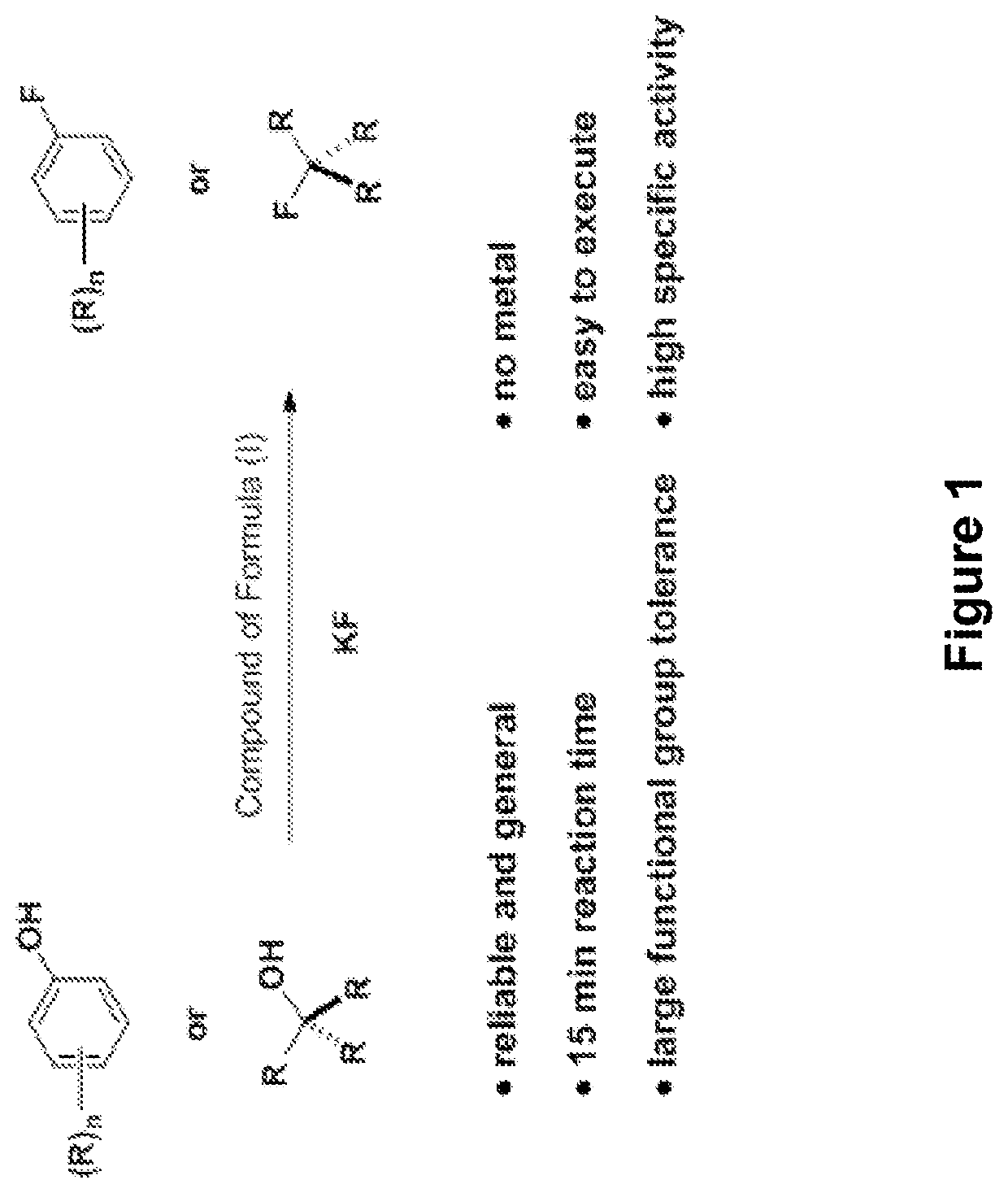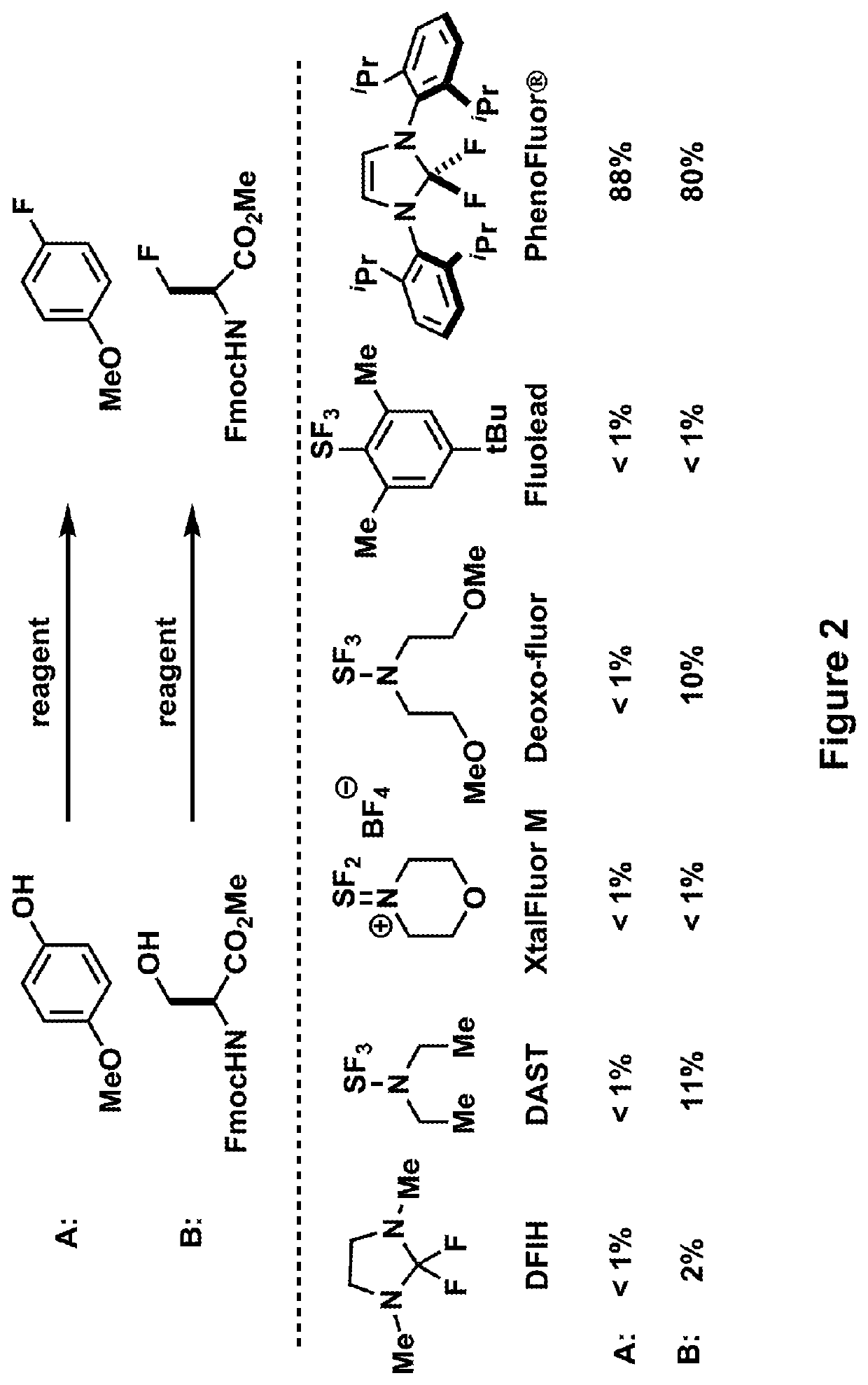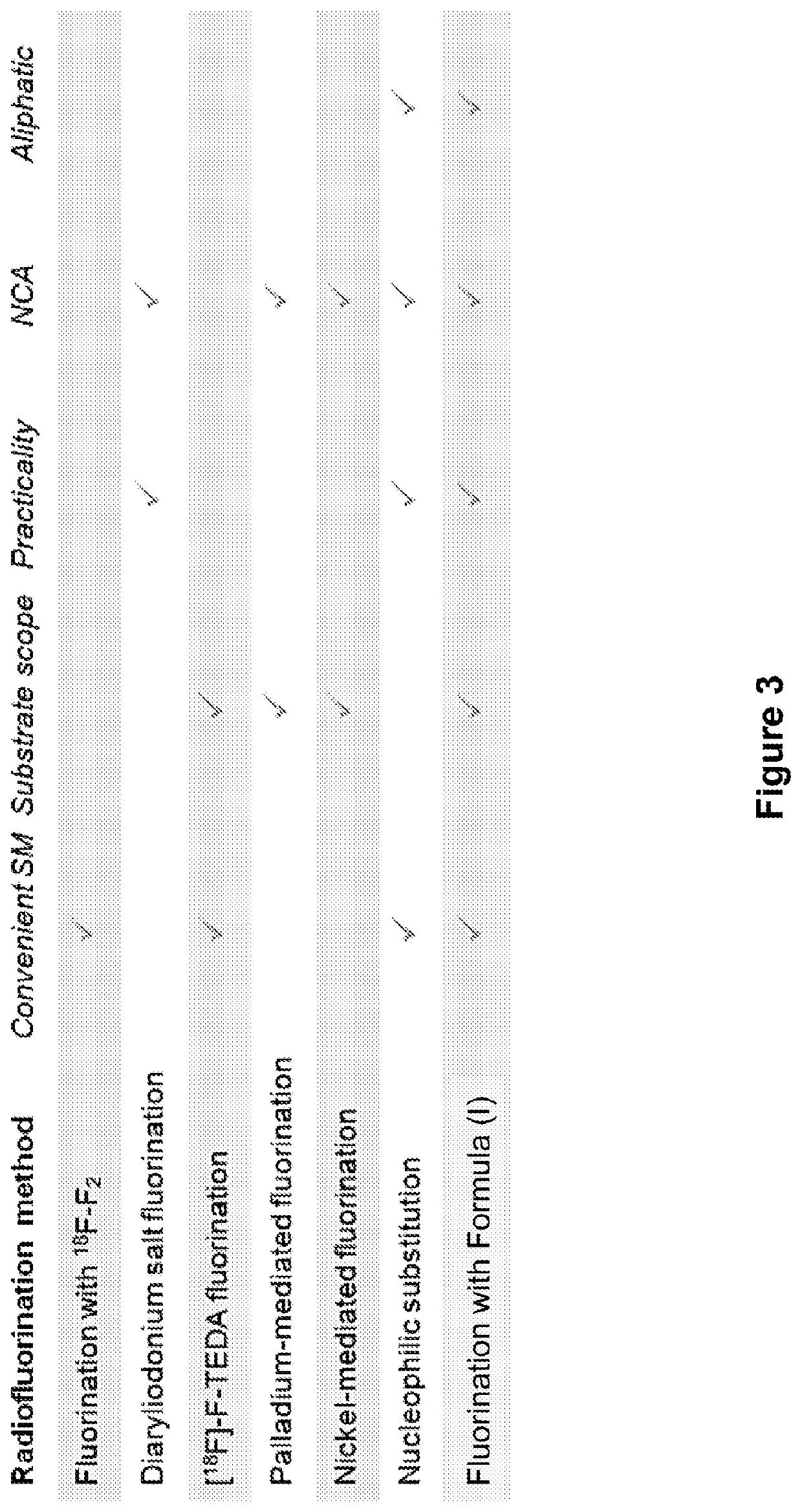Fluorination of organic compounds
a technology of organic compounds and fluorinated compounds, which is applied in the field of fluorinating organic compounds, can solve the problems of difficult radiofluorination, inability to structurely more complex molecules, and potential biomedical applications of pet for studying a variety of diseases, and achieves the effect of easy synthesizing and purifying, and quick access to new pet probes
- Summary
- Abstract
- Description
- Claims
- Application Information
AI Technical Summary
Benefits of technology
Problems solved by technology
Method used
Image
Examples
example 1
on of I-c
[0382]
[0383]To 1,3-bis(2,6-diisopropylphenyl)-1,3-dihydro-2H-imidazol-2-one (2.00 g, 4.93 mmol, 1.00 equiv) in dichloromethane (10 mL) at 23° C. was added triflic acid (435 μL, 4.93 mmol, 1.00 equiv). The reaction mixture was stirred for 1 hour before 50 ml hexanes were added to afford a white precipitate. The solids were collected by filtration and washed with hexanes (10 mL) and then dried under vacuum to afford 2.68 g of the title compound as a white solid (97% yield). X-ray quality crystals were grown by storing a concentrated solution of (I-c) in CDCl3 at 23° C. giving colorless crystals after 24 hours.
[0384]mp: 180° C. (decomp). NMR spectroscopy: 1H-NMR (400 MHz, CDCl3, 23° C., δ): 8.22 (broad, 1H), 7.52 (t, J=7.8 Hz, 2H), 7.33 (d, J=7.8 Hz, 4H), 6.73 (s, 2H), 2.66 (sept, J=7.0 Hz, 4H), 1.27 (d, J=4.3 Hz, 24H), 1.25 (d, J=3.9 Hz, 12H). 13C-NMR (125 MHz, CDCl3, 23° C., δ): 149.0, 145.8, 131.4, 127.9, 124.9, 124.4, 117.5, 28.9, 23.5, 23.2. 19F-NMR (375 MHz, CDCl3, 23° C...
example 2
ucture of I-c
[0387]I-c was crystallized as colorless plates by slow evaporation of a concentrated CDCl3 solution. A 0.4×0.3×0.1 mm crystal was selected and mounted on a nylon loop using Paratone-N oil, and transferred to a Bruker APEX II CCD diffractometer (MoK radiation, λ=0.71073 Å) equipped with an Oxford Cryosystems nitrogen flow apparatus. The sample was held at 150 K during the data collection. The collection method involved 0.5° scans in ω at 28° in 2θ. Data integration down to 0.82 Å resolution was carried out using SAINT V7.46 A (Bruker diffractometer, 2009) with reflection spot size optimisation. Absorption corrections were made with the program SADABS (Bruker diffractometer, 2009). The structure was solved by the direct methods procedure and refined by least-squares methods against F2 using SHELXS-97 and SHELXL-97 (Sheldrick, 2008). Non-hydrogen atoms were refined anisotropically, and hydrogen atoms were allowed to ride on the respective atoms. Restraints on bond lengths ...
example 4
ling of Estrone Using I-c
[0391]
[0392]Following azeotropic drying of 18F-fluoride (see general experimental section), 5 mg (I-c) and 10 mg estrone dissolved in dichloroethane (0.3 ml) were added and the reaction mixture was heated to 110° C. for 15 minutes. After the reaction mixture was allowed to cool to 23° C., a capillary tube was used to spot the solution on a silica gel TLC plate and was eluted with a 4:1 (v:v) hexanes:ethyl acetate (see FIG. 6A).
Example 5. Radiolabeling of Testosterone Using (I-c)
[0393]
[0394]Following azeotropic drying of 18F-fluoride (see general experimental section), 5 mg (I-c) and 10 mg testosterone dissolved in dichloroethane (0.3 ml) were added and the reaction mixture was heated to 110° C. for 15 minutes. After the reaction mixture was allowed to cool to 23° C., a capillary tube was used to spot the solution on a silica gel TLC plate and was eluted with a 4:1 (v:v) hexanes:ethyl acetate (see FIG. 6B).
PUM
| Property | Measurement | Unit |
|---|---|---|
| temperature | aaaaa | aaaaa |
| temperature | aaaaa | aaaaa |
| temperature | aaaaa | aaaaa |
Abstract
Description
Claims
Application Information
 Login to View More
Login to View More - R&D
- Intellectual Property
- Life Sciences
- Materials
- Tech Scout
- Unparalleled Data Quality
- Higher Quality Content
- 60% Fewer Hallucinations
Browse by: Latest US Patents, China's latest patents, Technical Efficacy Thesaurus, Application Domain, Technology Topic, Popular Technical Reports.
© 2025 PatSnap. All rights reserved.Legal|Privacy policy|Modern Slavery Act Transparency Statement|Sitemap|About US| Contact US: help@patsnap.com



